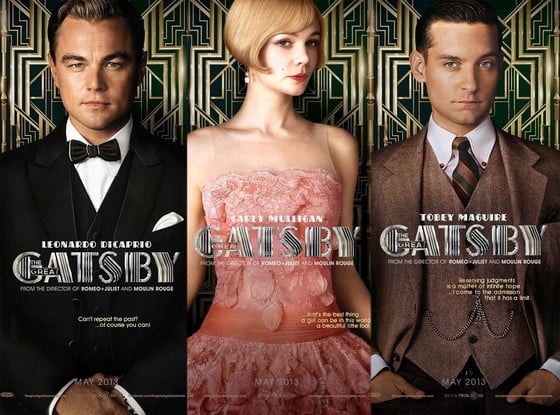
Reviews for Baz Luhrmann’s 2013 remake of The Great Gatsby have been mixed. Critics focused on the incredible 3D special effects and CGI. Most of them condemned Luhrmman’s sumptuous interpretation of Fitzgerald’s Jazz Age classic as so "unrealistic" as to "ruin a good story."
That was my expectation about the movie, too – until I saw it. Ready to hate it above all things, I went to a matinee with my father, fashion guru and LIM College Advisory Board member David Wolfe. We braced ourselves to be annoyed at best or incandescent with rage at worst.
Within the first five minutes, we found ourselves eating handfuls of humble pie along with the sandwiches we sneaked into the theatre.
Gatsby is one of the most beautiful movies we had ever, ever seen. Fitzgerald’s words floated out from the screen in the 3-D version, literally. Famous passages from the text appeared on the screen, and then floated out into the audience. Long Island looked like a Tahitian paradise. Gatsby’s mansion rivaled the Disney logo castle. The costumes were bright and outrageous, as was the music. Twenties Manhattan soared and bustled like Fritz Lang’s Metropolis. The "Wow" factor was so extreme that negative critics have been screaming that this is “just a fantasy view of the ‘20s,” that “no homes in America were ever as big as Gatsby’s,” that “Long Island could never be that beautiful,” and that “nobody danced The Charleston all the time!”
They are absolutely right, but miss the point. Lurhmann isn’t presenting a fantasy of the Twenties. He is telling the story as Nick Carraway remembers it. The narrative in the original text as well as the movie is a flashback. What we see on screen – the ludicrously extravagant parties with a million dancing girls – the tropical sunsets over The Sound – the fairy tale castle in which Gatsby dwells – is how Nick remembers things, not as they really were.
Memory magnifies, and we all remember the past as brighter, more beautiful, and more dramatic than real life ever could be, or (when it goes wrong) uglier and more horrible than anything Stephen King could produce. The same is true of Baz Luhrmman’s interpretation of Nick’s memories. As soon as you realize this, the movie moves from interesting to brilliant.

If you realize that, you also understand the strange performances from the cast. Leonardo DiCaprio’s stiff and actor-like performance at the start makes sense when you remember that Jay Gatsby was playing a role. So, DiCaprio does double duty as an actor playing a man who is playing another man. Yet when his confident, outer shell crumbles we see the "real" Jay Gatsby, far more vulnerable than the character probably was, like a broken little schoolboy in Carraway’s memory. Tobey McGuire makes for a smart and sympathetic Nick, and Carey Mulligan takes her Daisy from sweet and put-upon victim to the ultimately weak and self-serving character she truly is (a “careless” person, as Fitzgerald put it, “retreating into her money”).
So, having already told anyone who’d listen just how awful Gatsby would be, I am eating my words and urging everyone to see it. There isn’t much levity in Gatsby, but humor came by way of my dad, who remarked at the end, “Poor Leo! That’s two movies where he’s died in water. Oh well, at least he gets to die in a fancy Long Island swimming pool this time. Sure beats the North Atlantic.”
Amanda Hallay is a full-time faculty member at LIM College and teaches courses on the relationship between fashion, history and culture. She thinks The Great Gatsby is the finest novel of the 20th century, although she prefers Lolita (more laughs).
Topics: Gatsby, DiCaprio, Jazz Age, Flappers, Classic American Literature